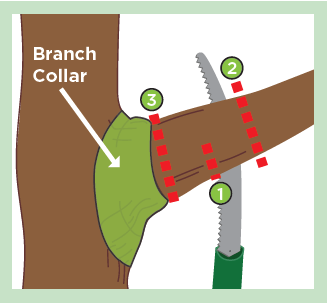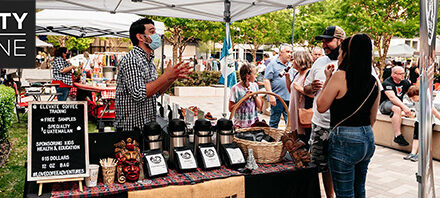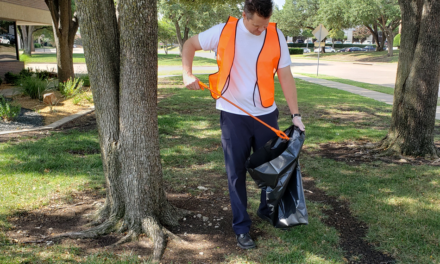Fall is a great time to prune and trim trees to get them ready for the spring and summer, since many trees have started to enter their dormant season and are no longer producing new leaves and buds. In addition, it is safer to prune oak trees in the fall and winter because the spring and summer months are the most active times for oak wilt transmission to occur. (Keep in mind that a tree should only be pruned after it has been in the ground for a year.)
When trimming a tree, it’s recommended that you use the standard three-cut method to prune back to another branch (see graphic). Also remember that sanitary and sharp tools help provide the cleanest cut. When limbing a tree up from the ground, the ideal proportion for most trees is 30 percent trunk and 70 percent canopy. This helps ensure that there are enough leaves generating food through photosynthesis to keep the tree healthy.

When disposing of the trimmings, choose from one of the following options:
Small tree limbs (4 feet in length or less), leaves and other vegetative material:
- Place in brown compostable bags (available for purchase at most big box home and garden stores) and place out front near curb for collection by BABIC (choose “compostable” when submitting online) OR
- Place in black trash bags and place at your normal trash collection point (no BABIC request needed)
Large tree limbs and large non-bagged vegetative debris
- Place out front near curb and request a BABIC collection (choose “compostable”)
BABIC Request: 972-744-4111 or visit www.cor.net/babic.




